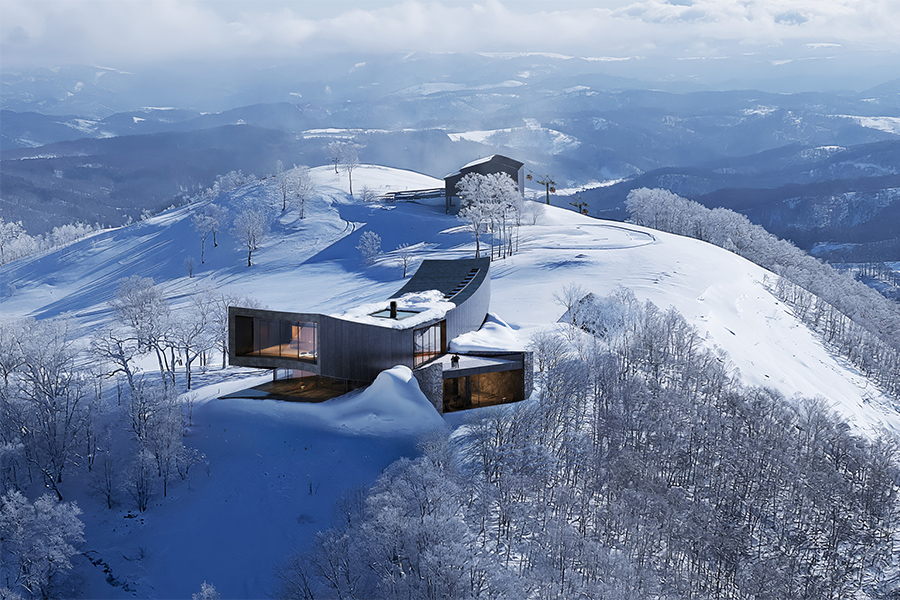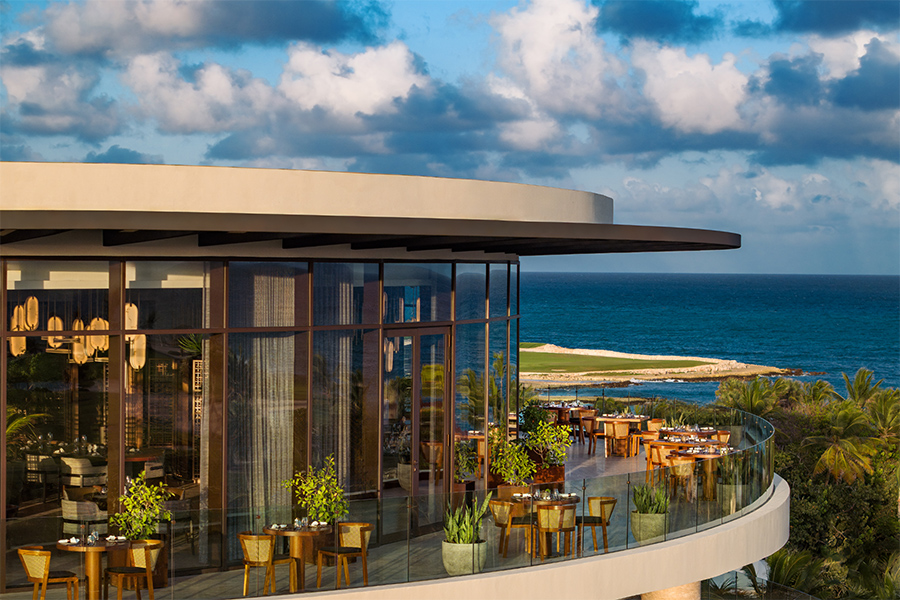Georgia’s capital is home to the world’s busiest international airport and sees more than 50 million visitors annually, so it’s no surprise that the bustling city is constantly evolving, attracting both design talent and investment in its growth. In fact, the city currently boasts 46 hotels under construction, representing 5,643 rooms, and an additional 59 properties are scheduled to start construction in the next 12 months, according to Lodging Econometrics. Among the recent development boon are a handful of boutique properties and restaurants offering a warm welcome to the south.
The Candler Hotel
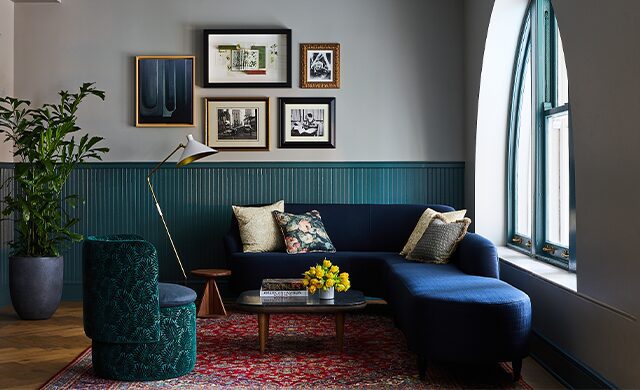
The Candler Hotel’s study features a diverse palette of blues
When this 265-key Curio Collection by Hilton property opened in the fall, it represented both an important historic restoration of a building built by the Coca-Cola Company’s original owner, Asa Griggs Candler, and an exciting design-forward boutique hotel. During the revamp, a document revealing the original 1906 floorplan was discovered, which required the design team—led by San Francisco-based designer Nicole Hollis—to follow it.
“It wasn’t ideal for a modern guestroom layout, but it forced us to create interesting yet functional room types,” she says, adding the structure provided inspiration, including pink marble in the basement that translated into bathroom vanities. The property is a wonder, blending old and new with a restored marble staircase, floor-to-ceiling windows in most rooms, and bold magnolia-print curtains. “We layered historical elements with modern interpretations,” Hollis adds.
The Whitley

A piece behind the concierge desk at the Whitley features a series of vintage hotel room keys
In spring 2019, this Luxury Collection hotel unveiled its multimillion-dollar transformation from its former incarnation as the Ritz-Carlton Buckhead. “Now, it’s bright with Southern charm and a welcoming front porch feel,” says Miriam Torres of Boston-based Parker-Torres Design, which led the 12-month renovation. The re-concepted first floor (“We blew out the back-of-house to open up the lobby,” says Torres) showcases location-specific art, including a life-sized sculptural buck, referencing the district’s name, by local artist Kevin Chambers. The 507 guestrooms flaunt residential-style living areas, marble bathrooms, and mahogany hardwood floors, some with ceilings painted in haint blue, a nod to the Southern architectural tradition.
The Burgess Hotel
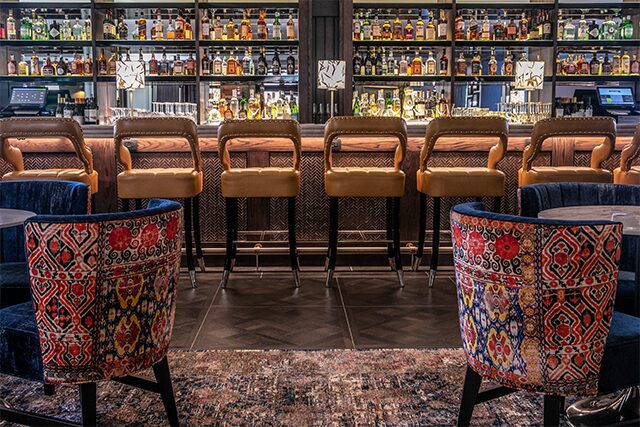
The Burgess Hotel’s interior scheme takes cues from its owners travels
Kimberley Miller, CEO and principal of Dallas-based Duncan Miller Ullmann, spearheaded the $15 million transformation of the former Wingate by Wyndham into the 102-room Burgess Hotel. The design takes cues from the backgrounds of owners Burges and Freny Jokhi (they hail from Hong Kong) and their travels, sourcing a mix of family heirlooms, antiques, and modern elements.
The lobby features Chinese scrolls painted by Freny’s mother, and the bar, Mr. B, has 30 vintage photographs from her father’s expedition as part of the first Indian group to summit Mount Everest. The eight suites are inspired by the their favorite destinations—including Bali, Morocco, and South Africa—while the doors are painted a striking lacquered royal blue. More than 30 pieces of art by the couple’s daughter, Chicago-based artist Jessica Jokhi, appear throughout. “We wanted to bring something that was personal and one-of-a-kind to Buckhead—a hotel that is an extension of us,” Freny says.
Halfway Crooks
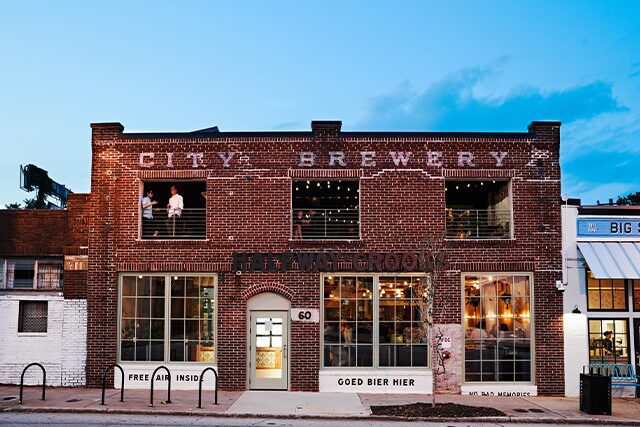
Halfway Crooks resides in a century-old structure in Atlanta
It’s nearly impossible to explore some of Atlanta’s trendy restaurants, without seeing the work of local firm Square Feet Studio. Many of their restaurants appear in transformed old buildings, like Halfway Crooks brewery, which opened inside a century-old brick structure in Atlanta’s Summerhill neighborhood last summer. Here, grandmotherly patterns and mismatched furniture populate the interiors as a nod to Belgian cafés, while old interior walls inform the brewery’s palette.
“When we repurpose buildings, there’s a very direct connection between the past and the future,” says founding principal and architect John Bencich. “These projects serve a critical role in the growth of a neighborhood and city and provide character that can’t be recreated.”
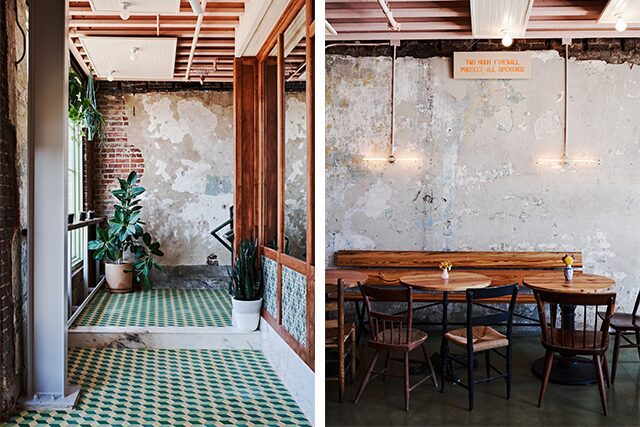
Eclectic tiles and old interior walls inform the industrial palette at Halfway Crooks
Photography by Nicole Franzen, Emily Followill, Heidi Geldhauser Harris, and Andrew Thomas Lee
This article originally appeared in HD’s February 2020 issue.

